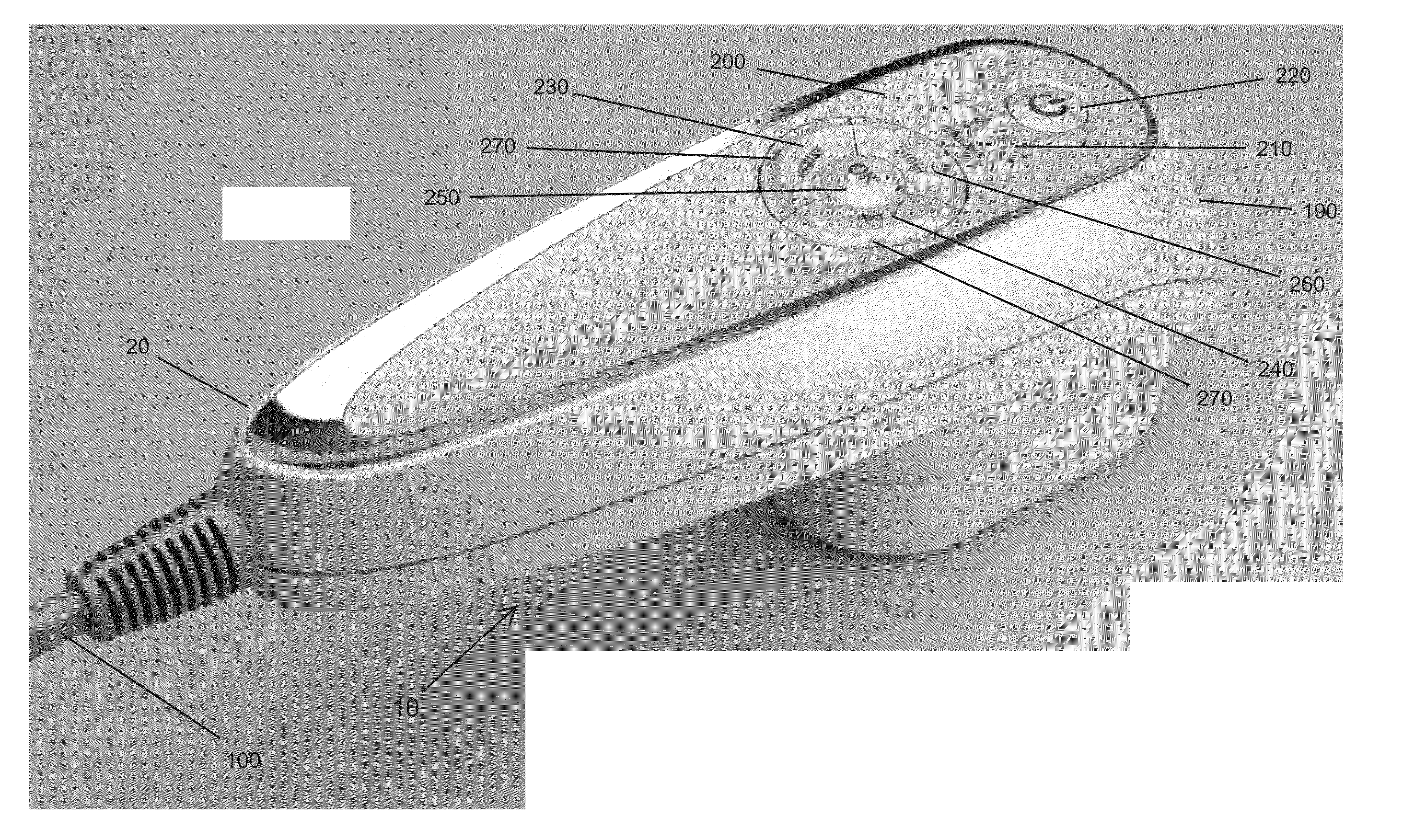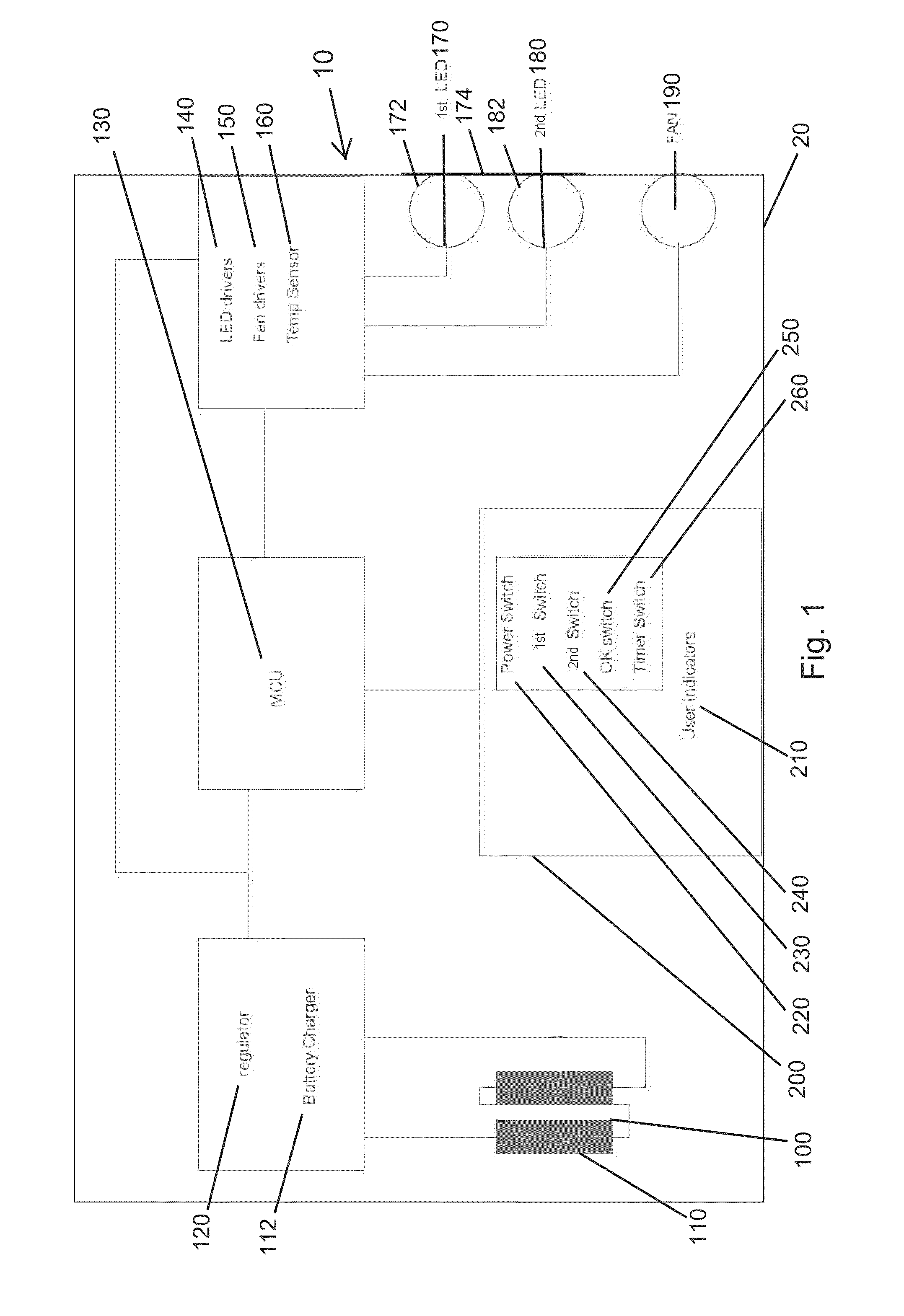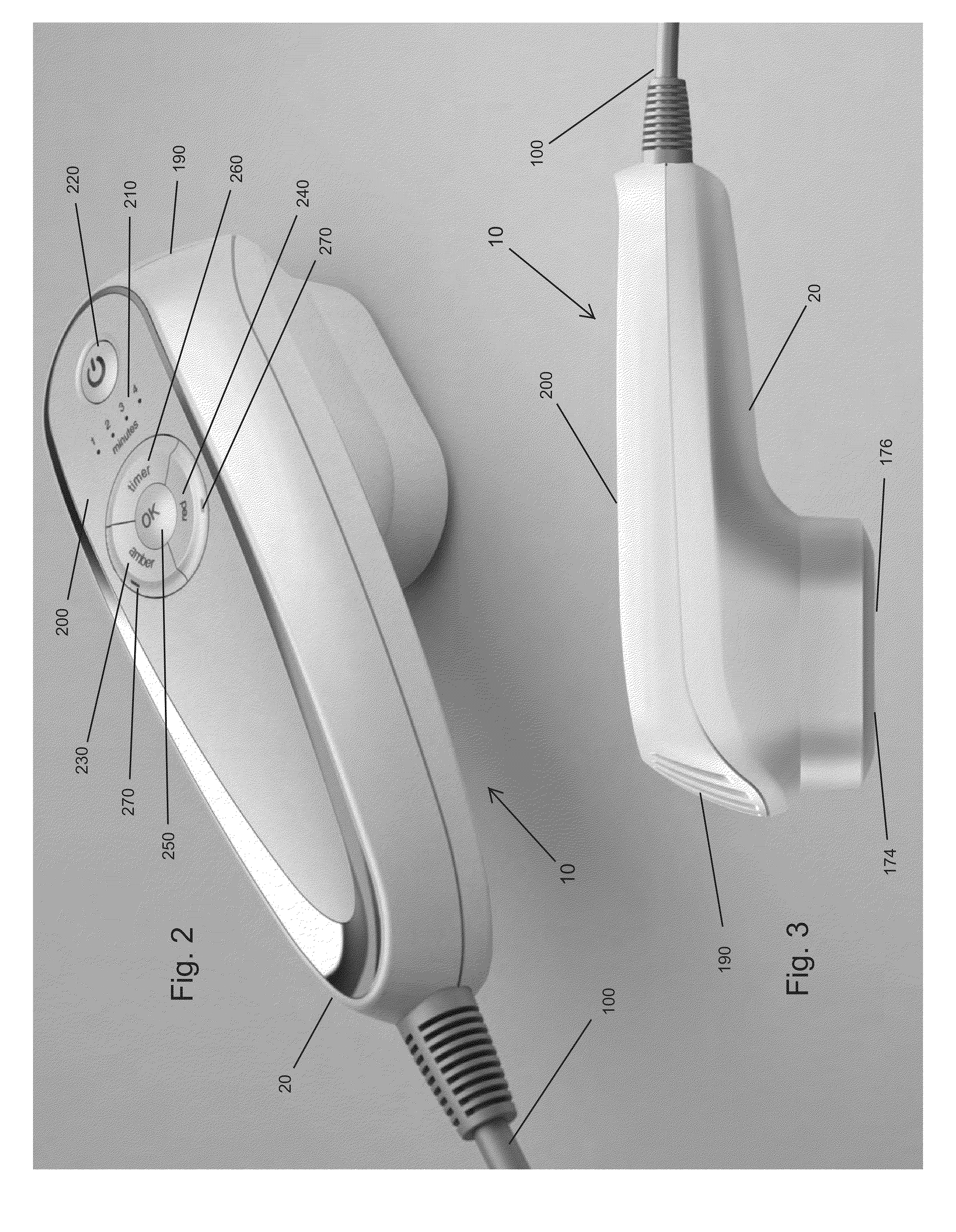High Powered Light Emitting Diode Photobiology Device
a light-emitting diode and photobiology technology, applied in the field of phototherapy, can solve the problems of inability to fully realize the effects of treatment, poor treatment effect, and inability to operate independently, and achieve the effect of improving treatment efficacy and enabling cleaning and sterilization
- Summary
- Abstract
- Description
- Claims
- Application Information
AI Technical Summary
Benefits of technology
Problems solved by technology
Method used
Image
Examples
Embodiment Construction
[0079]The device of the present invention provides a combination of high-powered light-emitting diodes (LEDs) each having specific properties of optical output power at specific wavelengths of emission. The LEDs are equipped with specific integrated optics adapted to the LED's respective wavelengths.
[0080]In marked contrast to the use of lasers for phototherapy, the LEDs of the present invention generate noncoherent, or out-of-phase, light—wherein the light waves are not synchronized. This provides the beneficial result of LEDs being a safe, diffused light source that does not burn or damage tissue as can laser light.
[0081]Unlike traditional lasers phototherapy devices and methods, this present invention uses an innovative and novel combination of continuous high-powered LEDs, having specific optical output power(s) at specific wavelengths. The LED devices of the present invention also incorporate specified optics developed to enhance the efficacy of their respective wavelengths. Th...
PUM
 Login to View More
Login to View More Abstract
Description
Claims
Application Information
 Login to View More
Login to View More - R&D
- Intellectual Property
- Life Sciences
- Materials
- Tech Scout
- Unparalleled Data Quality
- Higher Quality Content
- 60% Fewer Hallucinations
Browse by: Latest US Patents, China's latest patents, Technical Efficacy Thesaurus, Application Domain, Technology Topic, Popular Technical Reports.
© 2025 PatSnap. All rights reserved.Legal|Privacy policy|Modern Slavery Act Transparency Statement|Sitemap|About US| Contact US: help@patsnap.com



